Top 10 Fast Growing Shrubs for Instant Curb Appeal
Updated: Jun. 21, 2022
Get fantastic looking results and landscaping benefits even faster than usual with our gardening expert's picks for fast growing shrubs.
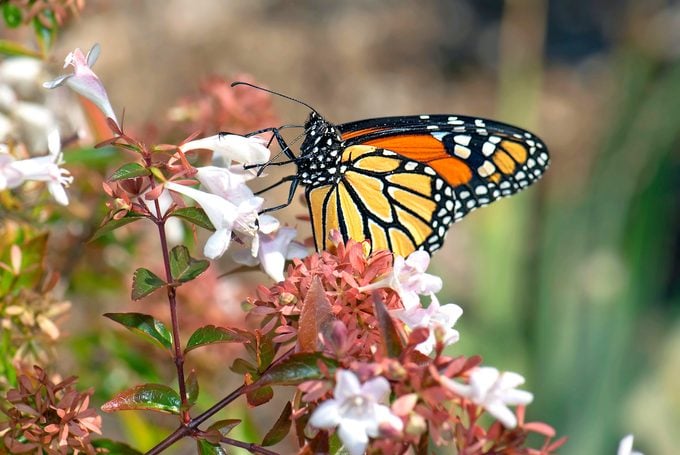
Shrubs are beautiful, yet functional features of the landscape. We use them to screen bad views, define our property lines, add seasonal interest and, of course, attract birds, butterflies and bees to the garden. However, many of us don’t want to wait for them to reach full size. You can hurry up the process with these fast growing shrubs. (But make sure to select varieties that are good for your zone and growing conditions!)
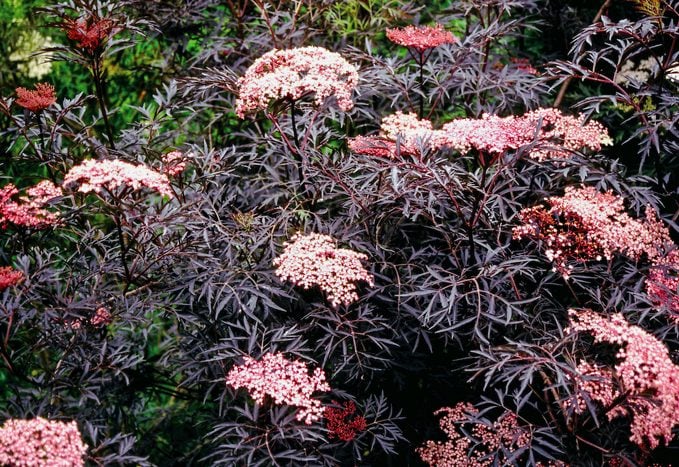
Fast Growing Shrubs: Elderberry
Sambucus, Zones 3 to 9
Add a few elderberries for you and the birds to enjoy. Butterflies are attracted to the flowers that appear in summer. The small, purple-black fruit that follows attract birds and can be used for jellies, pies, juice and wine. New cultivars like Black Lace and Lemon Lacy add fine texture and color to the landscape.
Why we love it: Elderberries tolerate wet and even dry soil once established.
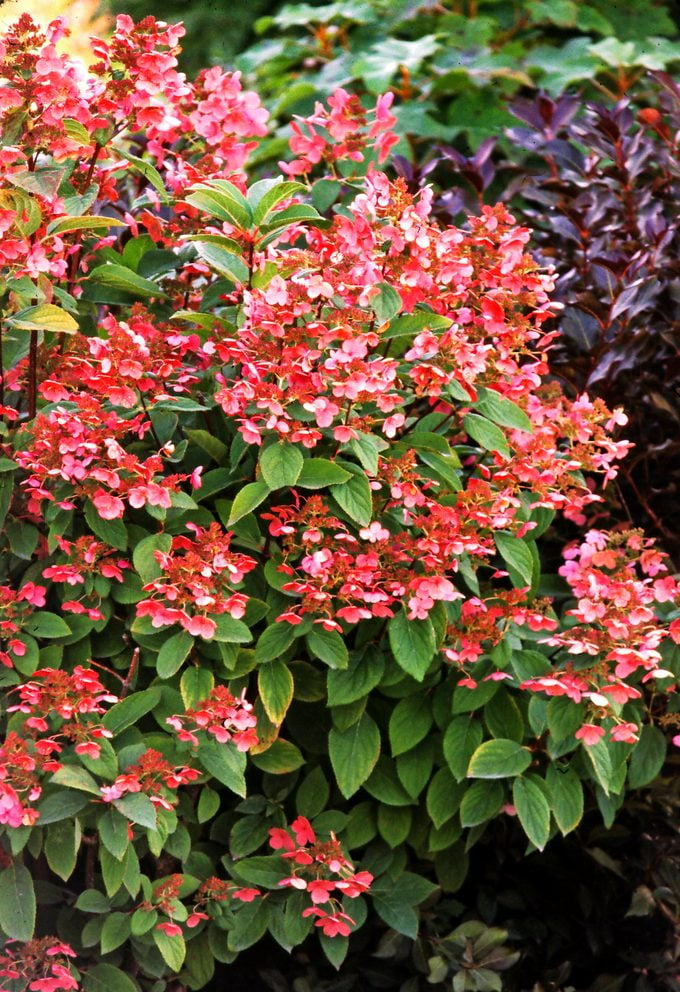
Panicle Hydrangea
Hydrangea paniculata, Zones 3 to 8 and 9 to 10 on West Coast
The newer and shorter varieties have helped this plant’s popularity explode. Their hearty nature and low-maintenance makes them an easy plant to use as a hedge, in mixed borders or as a specimen. Grow hydrangeas in full to part sun and check the plant tag for proper spacing.
Why we love it: Its close cousin, the Annabelle-type hydrangea, grows quickly and makes a nice addition to shade gardens.
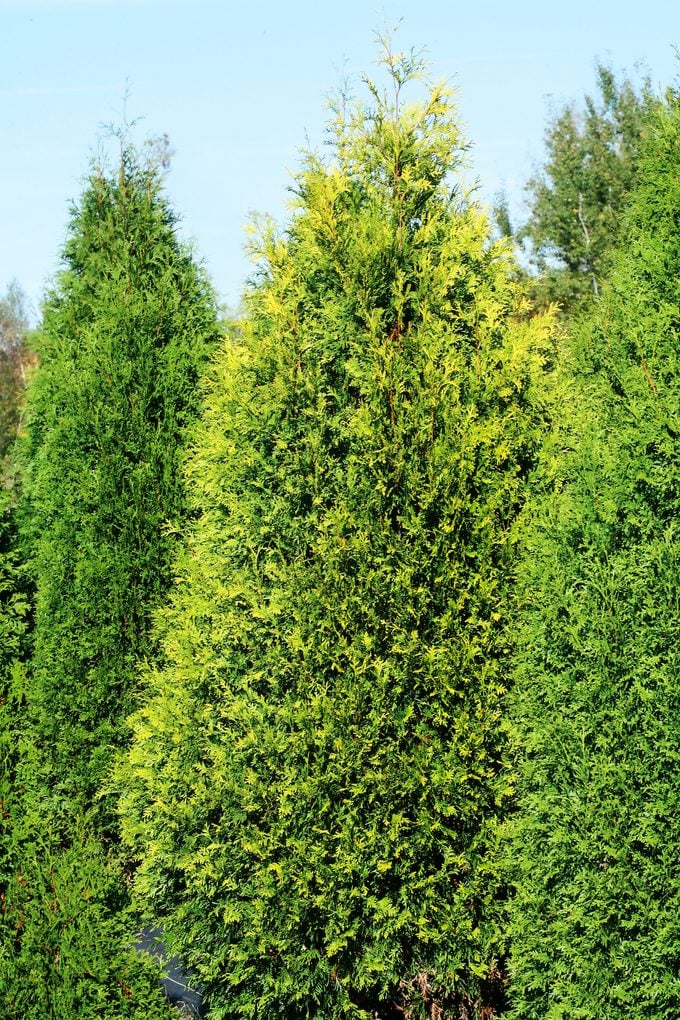
Green Giant Arborvitae
Thuja ‘Green Giant’, Zones 5 to 8
Arborvitae is a popular evergreen for screening and hedges. This hybrid matures to more than 40 feet tall and 12 feet wide. Plan accordingly! Here’s another tip—break out the pruners and do regular snipping to contain its growth. It does great in full sun or part shade.
Why we love it: This arborvitae tends to stay greener than most in winter.
Check out the top 10 dwarf conifers for small spaces.
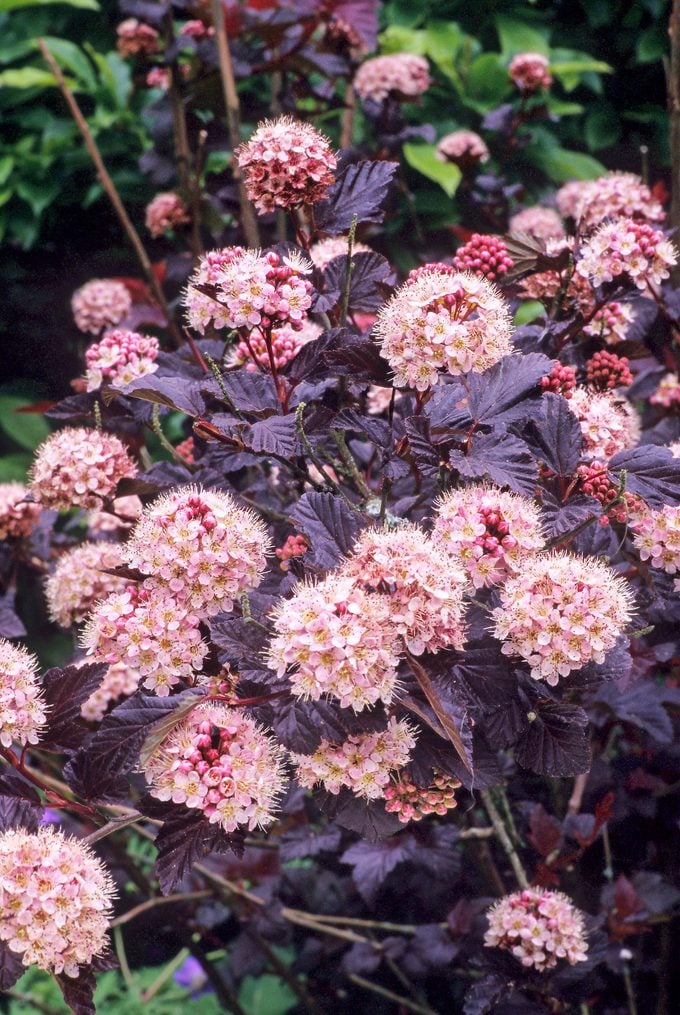
Ninebark
Physocarpus opulifolius, Zones 2 to 8
New cultivars with colorful foliage have moved this native plant out of the back border and into the spotlight. Use as a hedge, backdrop for flowers or in mixed borders. This tough fast growing shrub tolerates full sun to part shade, drought, salt, clay and rocky soils.
Why we love it: You can find lots of compact cultivars like Lady in Red (Ruby Spice), Nugget, Little Devil and Amber Jubilee.
Check out 10 shrubs with pink flowers.
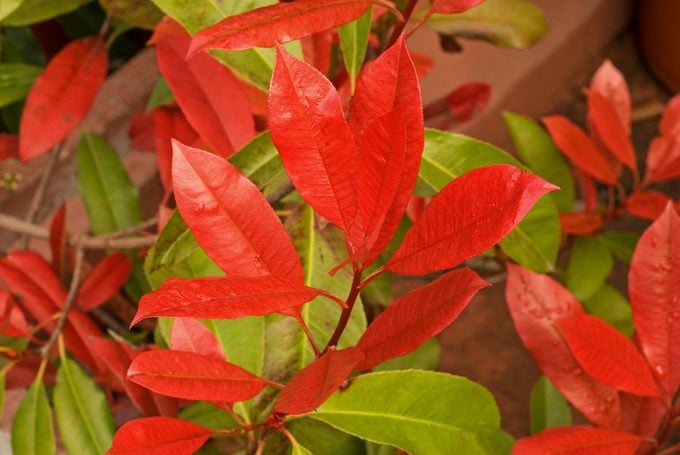
Fraser Photinia
Photinia x fraseri, Zones 7 to 9
This is an evergreen shrub often used as part of a screen or tall hedge. Its bright red ends have inspired its other common name—red tip. Regular pruning controls the plant’s size and promotes new growth. White flowers appear in spring and though they’re pretty to look at, they’re not pleasant to smell. Be aware that these fast growing shrubs are invasive in some parts of Texas.
Why we love it: Red Robin photinia tends to be less susceptible to leaf spot diseases.
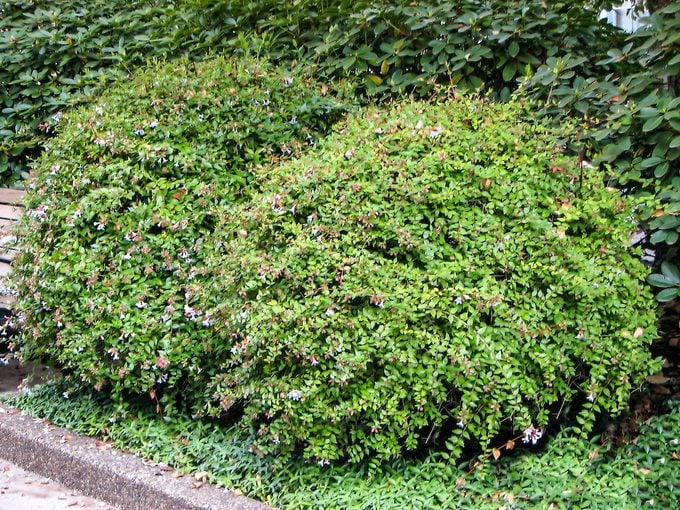
Glossy Abelia
Abelia x grandiflora, Zones 5 to 9
Add some fragrance and color with this sweet fast growing shrub. Fragrant, bell-shaped flowers first appear in spring and continue throughout the growing season. The season ends with purplish fall foliage. Grow in full sun for the best flowering and fall color. Use en masse, as a hedge, in natural areas or in front of larger plants and evergreens.
Why we love it: This low-maintenance plant has few pest problems.
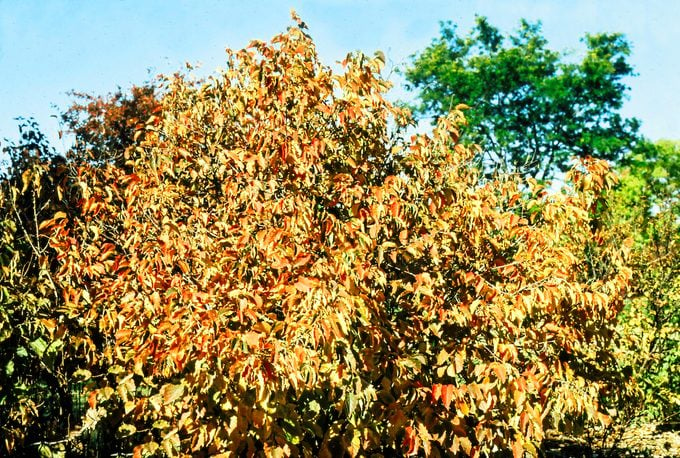
Hazelnut
Corylus Americana, Zones 3 to 9
This easy to grow native shrub grows in full sun to part shade and moist to dry soils. The edible fruit can be roasted and eaten if you can harvest the nuts before the birds and squirrels do. Use as a screen or hedge in informal or natural areas where it has room to spread.
Why we love it: The pendulous male flowers (catkins) provide added interest in late winter or early spring.
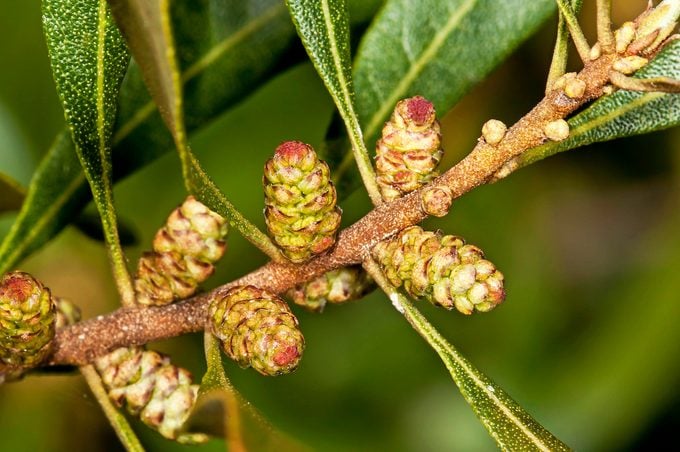
Waxmyrtle
Myrica cerifera, Zones 7 to 11
This native tree is often pruned and used as a fast growing shrub. It’s easy to grow and tolerates a wide range of soil conditions, including drought and flooding. Northern gardeners can grow its hardier relative, Bayberry (Myrica pennsylvanica).
Why we love it: The evergreen foliage is fragrant when crushed, and the gray berries are an energy source for winter birds like yellow-rumped warblers.
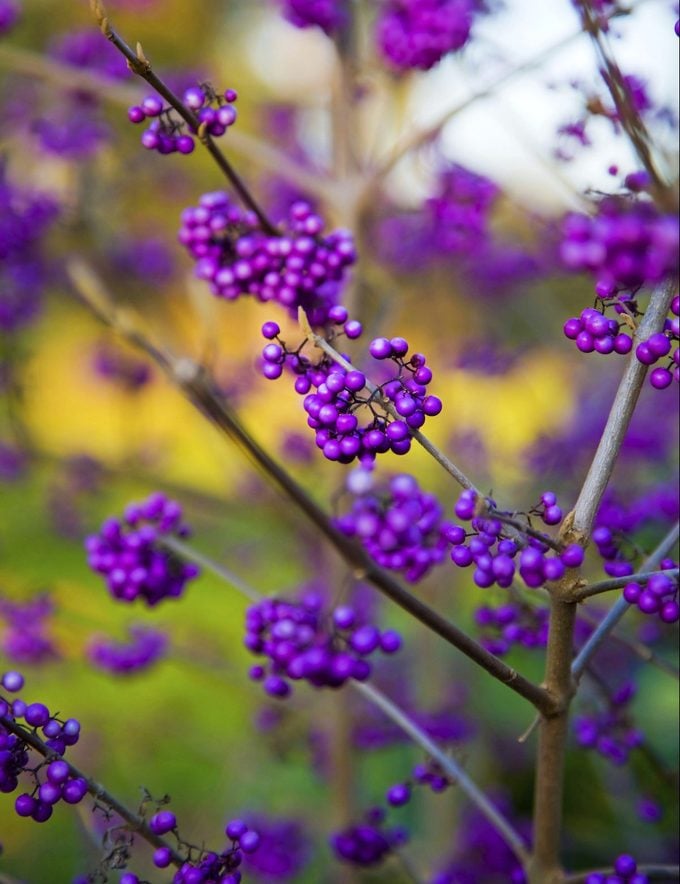
Japanese Beautyberry
Callicarpa japonica, Zones 5 to 8
The striking violet to almost metallic purple fall fruit make these fast growing shrubs worthy of a spot in the shrub border. The blue-green leaves make a nice backdrop for both the pinkish white flowers and fruit. It grows best in full sun or light shade in well-drained soils.
Why we love it: The birds love the fruit of both this and its southern cousin, American beautyberry, which is hardy in zones 6 to 11.
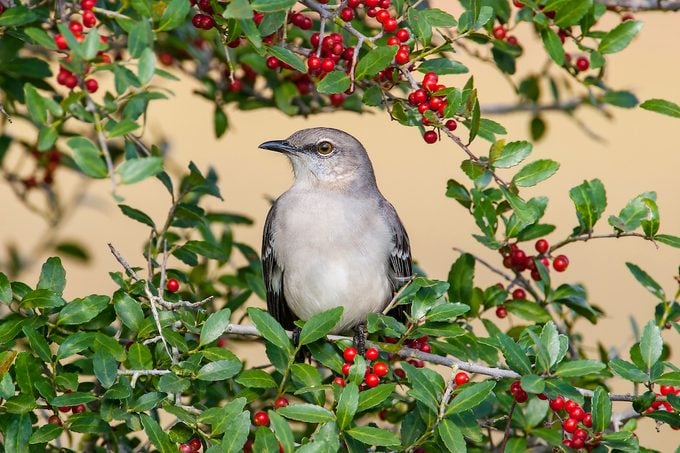
Yaupon
Ilex vomitoria, Zones 7 to 10
These native evergreen fast growing shrubs form dense thickets well suited for screens, hedges, windbreaks and barriers. Yaupon can be espaliered or trained as a small tree or topiary. The red berries brighten the winter landscape and provide food for the birds.
Why we love it: Its adaptability, along with drought- and disease-tolerance, makes it a long-lived native alternative to boxwood.
Check out more berry bushes that bird lovers should grow.
